The Problem
Stress has become a growing concern in modern society as the job environment and education are becoming more competitive. Long term consequences of the same are often ignored leading to a plethora of psychological and physiological problems if left unchecked. Stress monitoring and periodic feedback can help people better manage their stressors by providing easy to use tools. Sweating is a biological mechanism which is controlled by physiological and psychological activity. Emotional stress can be correlated with sweating activity.
Existing Systems:
Existing devices have been bulky and have primarily been used for clinical diagnosis. To perform continuous monitoring however user’s comfort plays a major role during development of such a device.
The current commercially available EDA sensing tools are bulky and comprise of a separate amplier and Analog to digital convertor along with a data acquisition device.
The external electrodes used are uncomfortable for long use. The current systems include edaMove, Empatica Embrace, CPSpro EDA tool. The Embrace and edaMove have explored wearable wristworn designs and though an improvement to previous designs, they measure only EDA and are quite expensive for consumers. One of the major reasons for discomfort is the use of metal plate electrodes or gel type AgCl electrodes while measuring EDA.
Solution:
![]() Aman: The machine learning assisted stress monitor
Aman: The machine learning assisted stress monitor
My goal is to quantify stress in a person by measuring Electrodermal Activity, Heart Rate and Heart Rate Variability continuously in a person invisibly in a Sock.
Along with this motion data along with ambient Temperature and Humidity is measured.
Use of continuous monitoring aids in preventative healthcare diagnostics and use of data sharing with loved ones can aid in forging better relationships and handle stress better.
This form of quantified stress tracking can be correlated specific events which when digitised allows not only raw records of the event but also how the person reacted to the same. Contextual information such as this can be viewed by the user later to reflect on the events and alter behavior using machine learning.
Dry fabric electrodes have been shown to improve comfort from the standpoint of the user while compared to standard metal electrodes and thus we aim to use it.
Photoplethysmography would be done on the big toe validated here, Textile connectors would snap into the toe sensor enabling quick removal before washing.
HRV and Heart Rate would be calculated by measuring the reflectance of the 535nm light in the toe. Piezoresistive strips would be used to provide information on gait and motion data.
Environmental information such as temperature, humidity would be sensed by a HTU21 sensor. Motion data and gait would measured using the Eeonyx Piezoresistive textile which would be lined along joints and the toe to enable better filtering of PPG against blood dynamics due to motion.
System Design:

Electrodermal Activity sensing:
The Electrodermal activity signal consists of two parts the tonic and phasic activity, the tonic portion of the EDA signal is slow varying and is called the Skin Conductance Level (SCL) which corresponds to physiological the phasic activity is quick reacting and are associated with short term events and in response to cognitive and sensory input the sudden peaks are known as Skin Conductance Responses(SCRs). Besides this the physiological activity is a contributing factor while monitoring EDA.
We have used conductive textile based sensors stiched inside the sock with two electrodes placed an inch away in the arch of the foot. This has been validated by research in Wearable's lab ETH.
For initial evaluation and testing, We just use a resistor divider along with a low pass filter ceramic capacitor before interfacing to the ADC. More work has to be done to add some active filters and amplifiers (Maybe some wheatstone resistance bridge?).
Heart Rate Sensor:
A pulse sensor amped from World Famous Electronics...
 Naveen Sridharan
Naveen Sridharan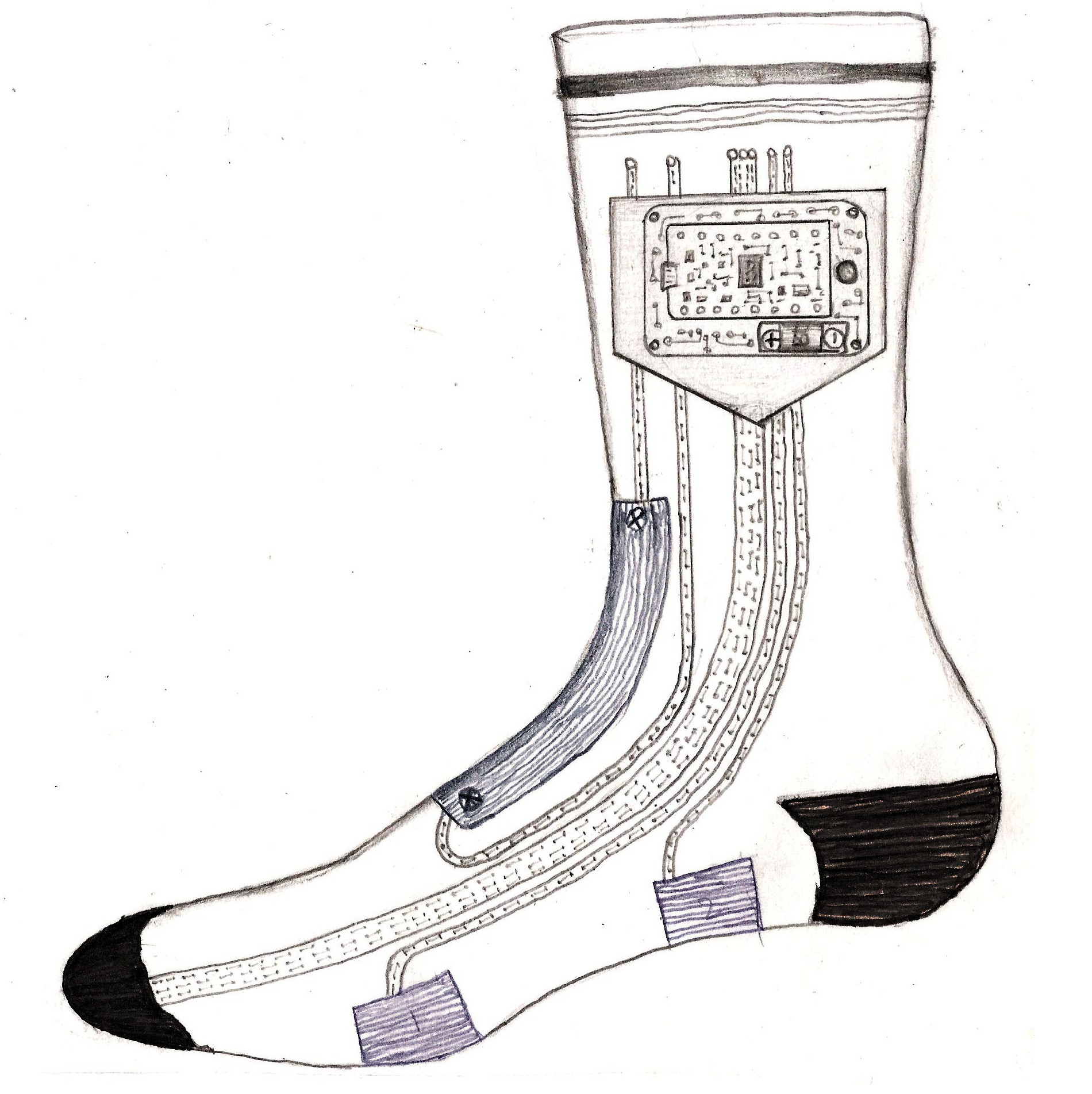 Aman: The machine learning assisted stress monitor
Aman: The machine learning assisted stress monitor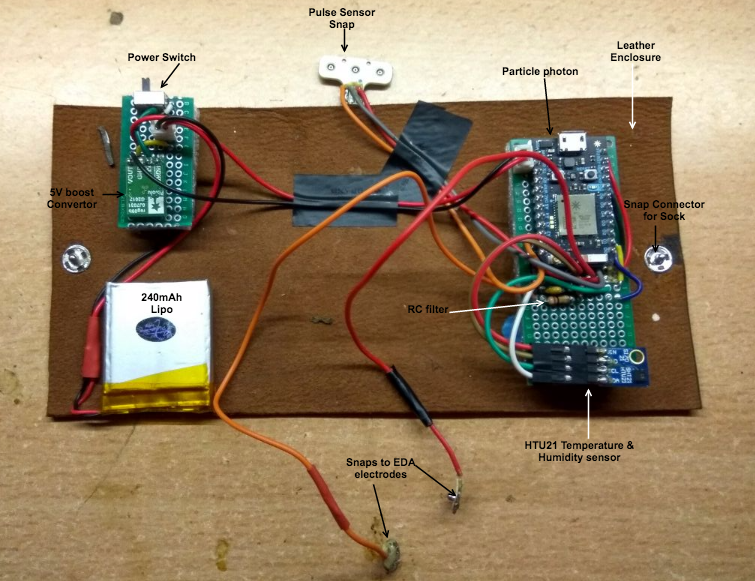

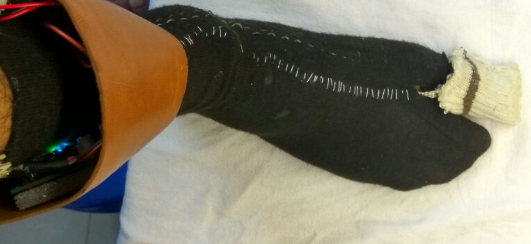
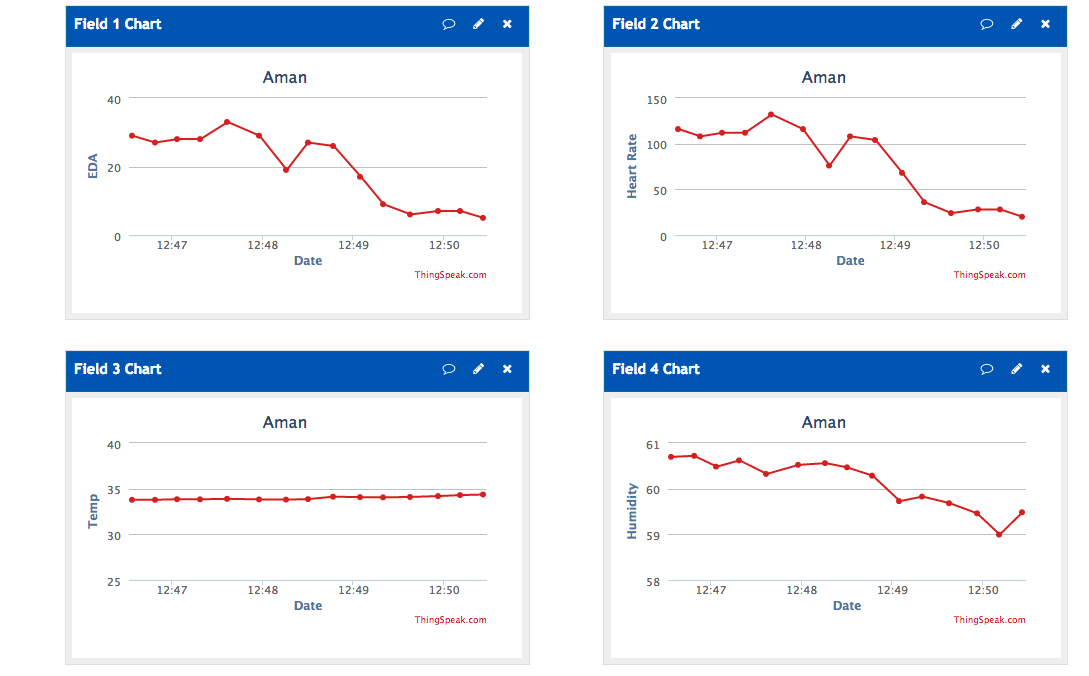 This was the data I acquired for a short while, More data on the way.
This was the data I acquired for a short while, More data on the way.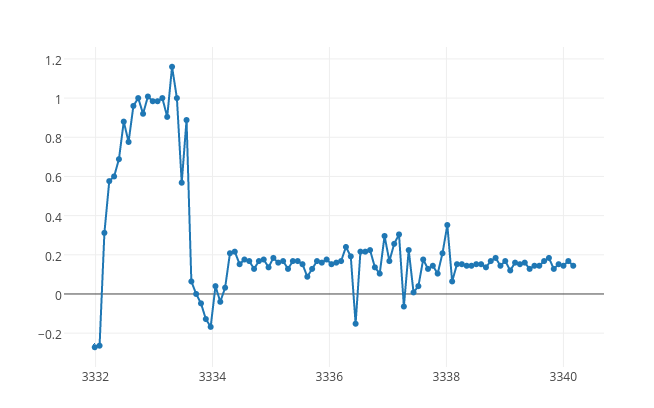


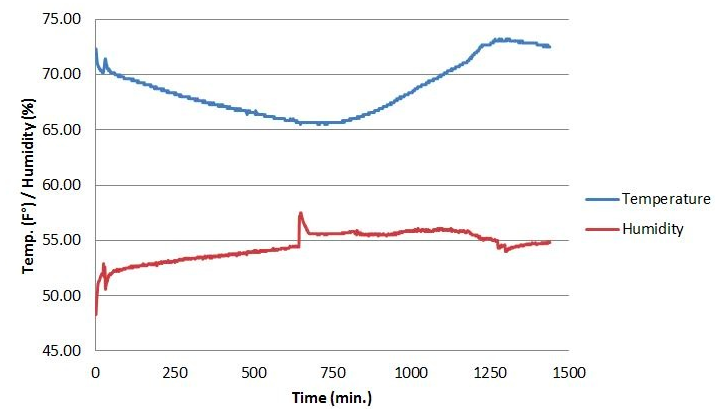
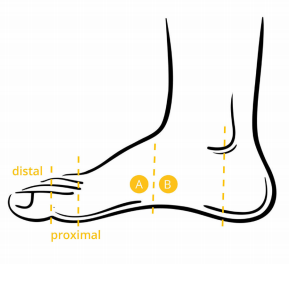


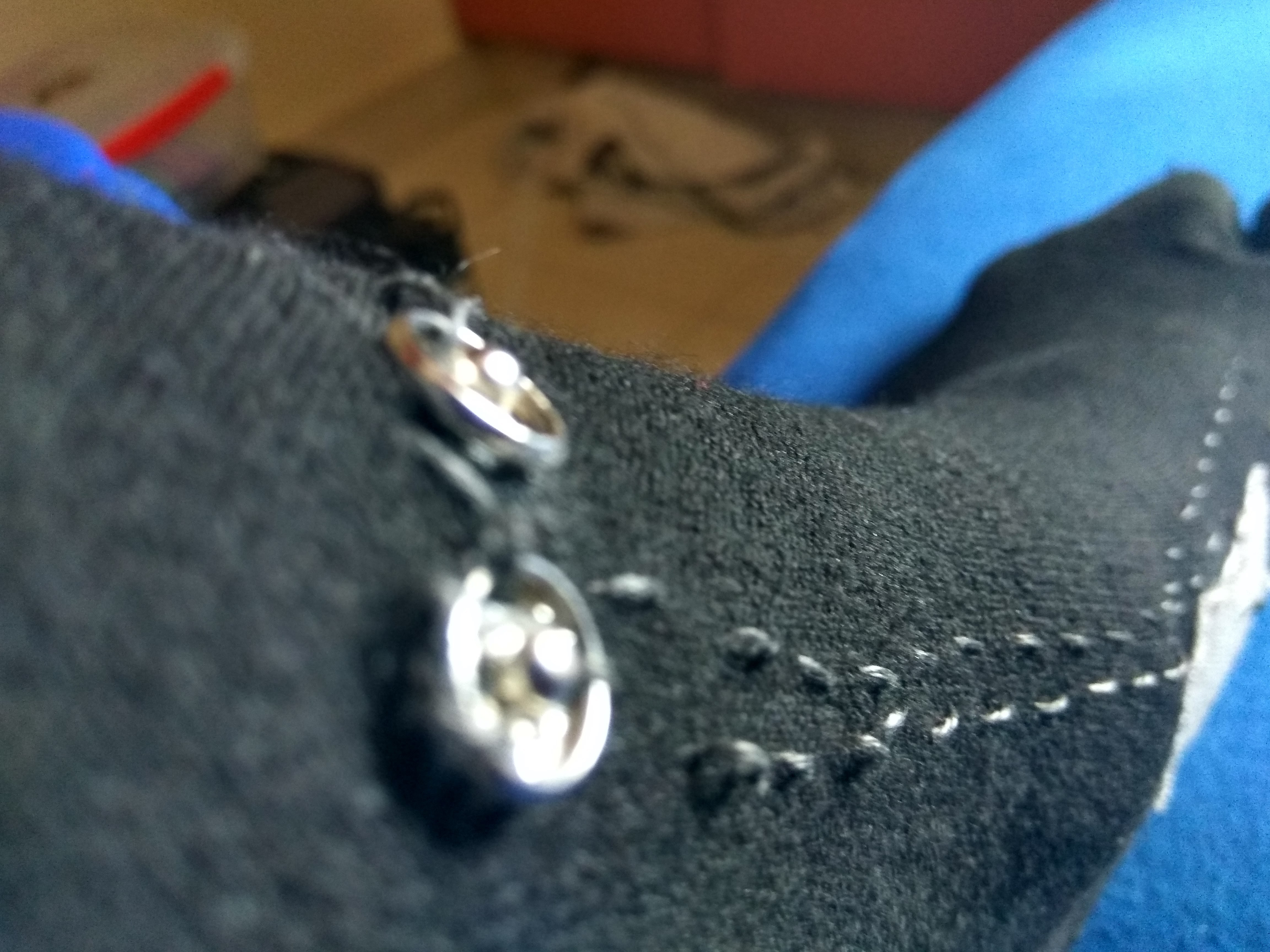
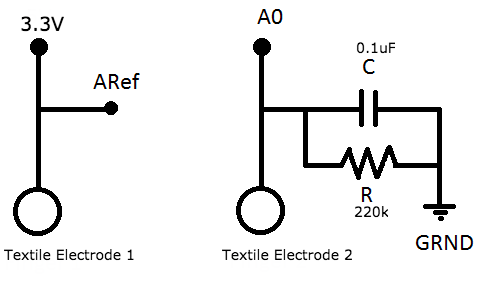


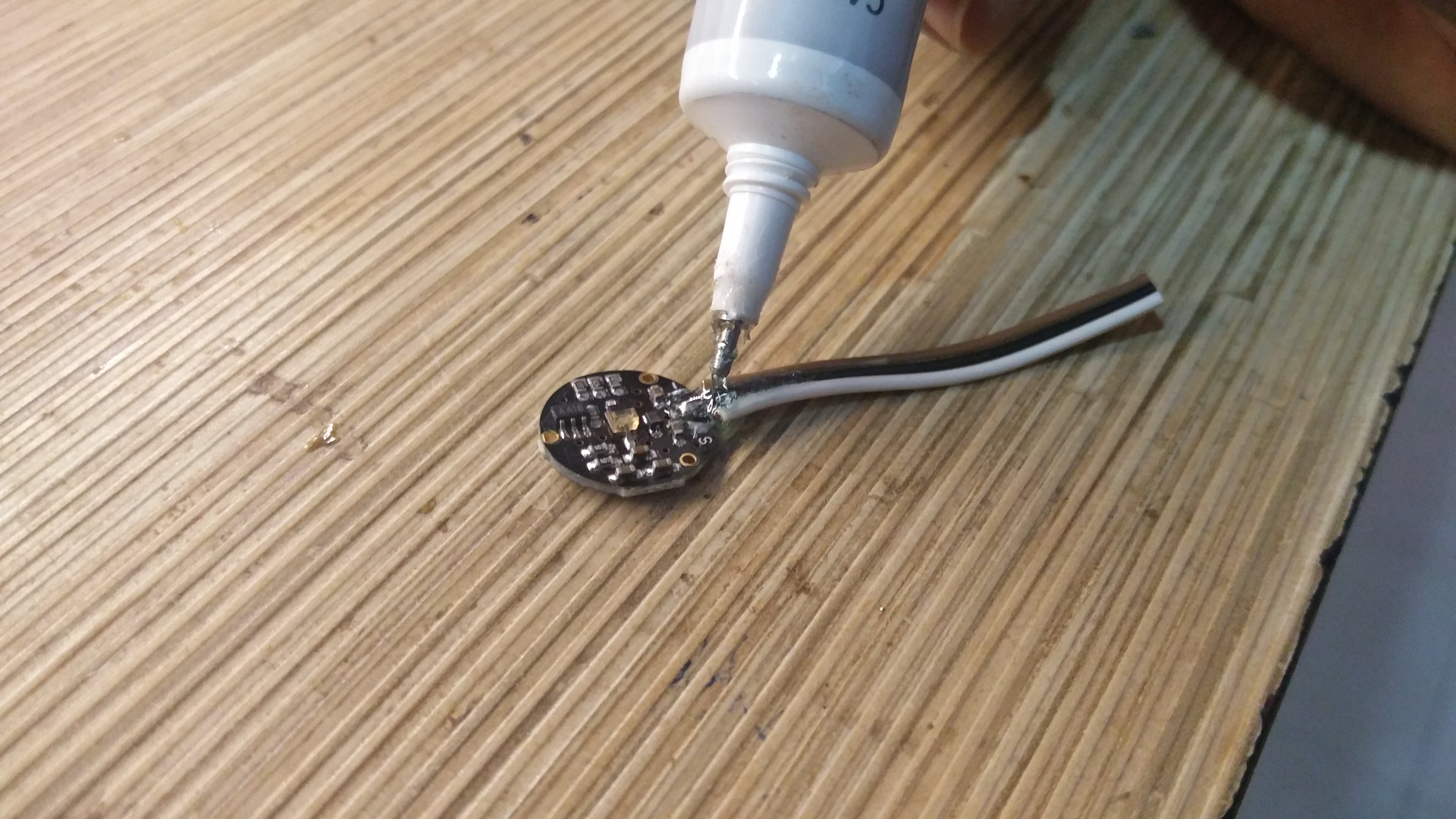
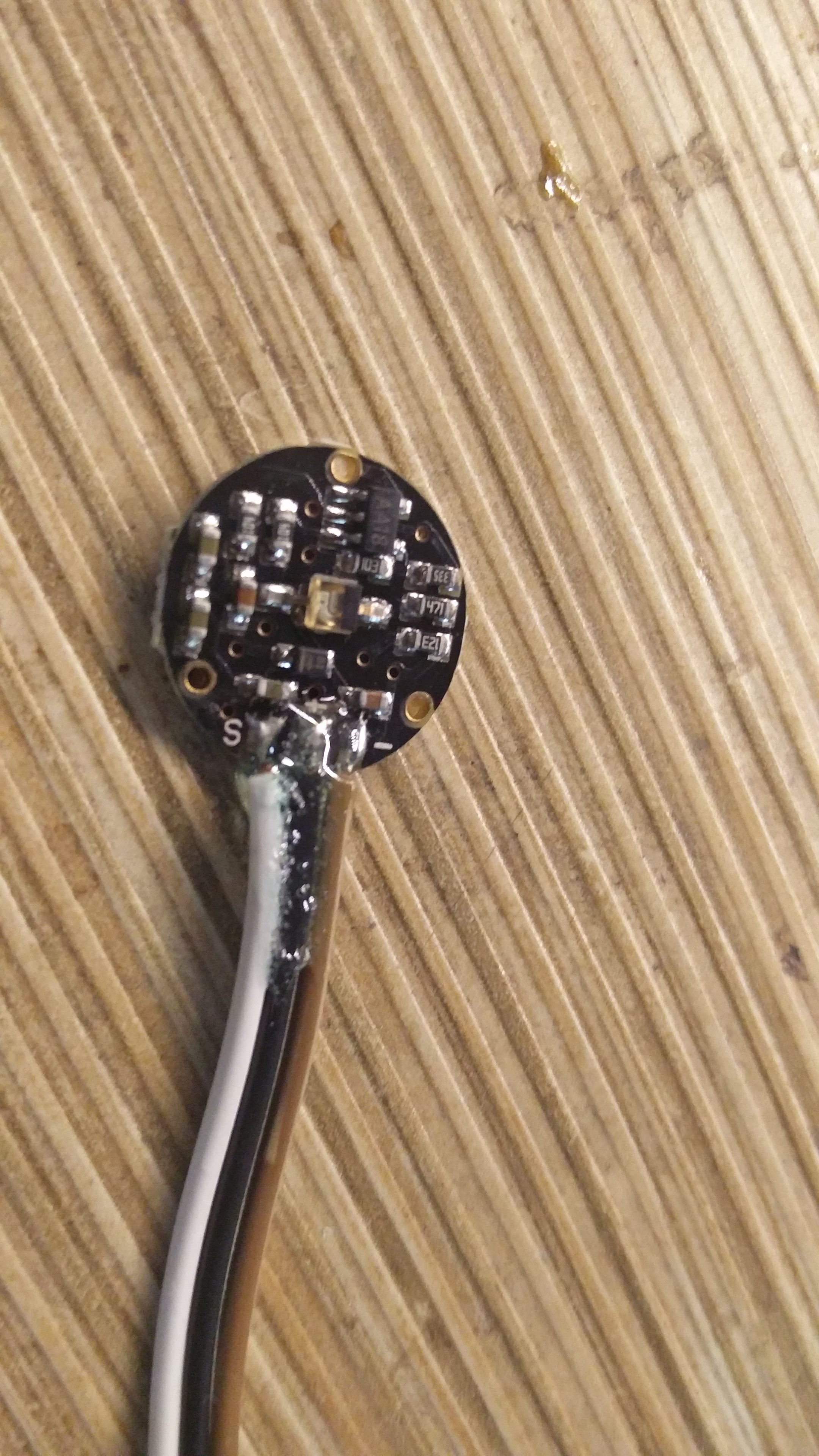
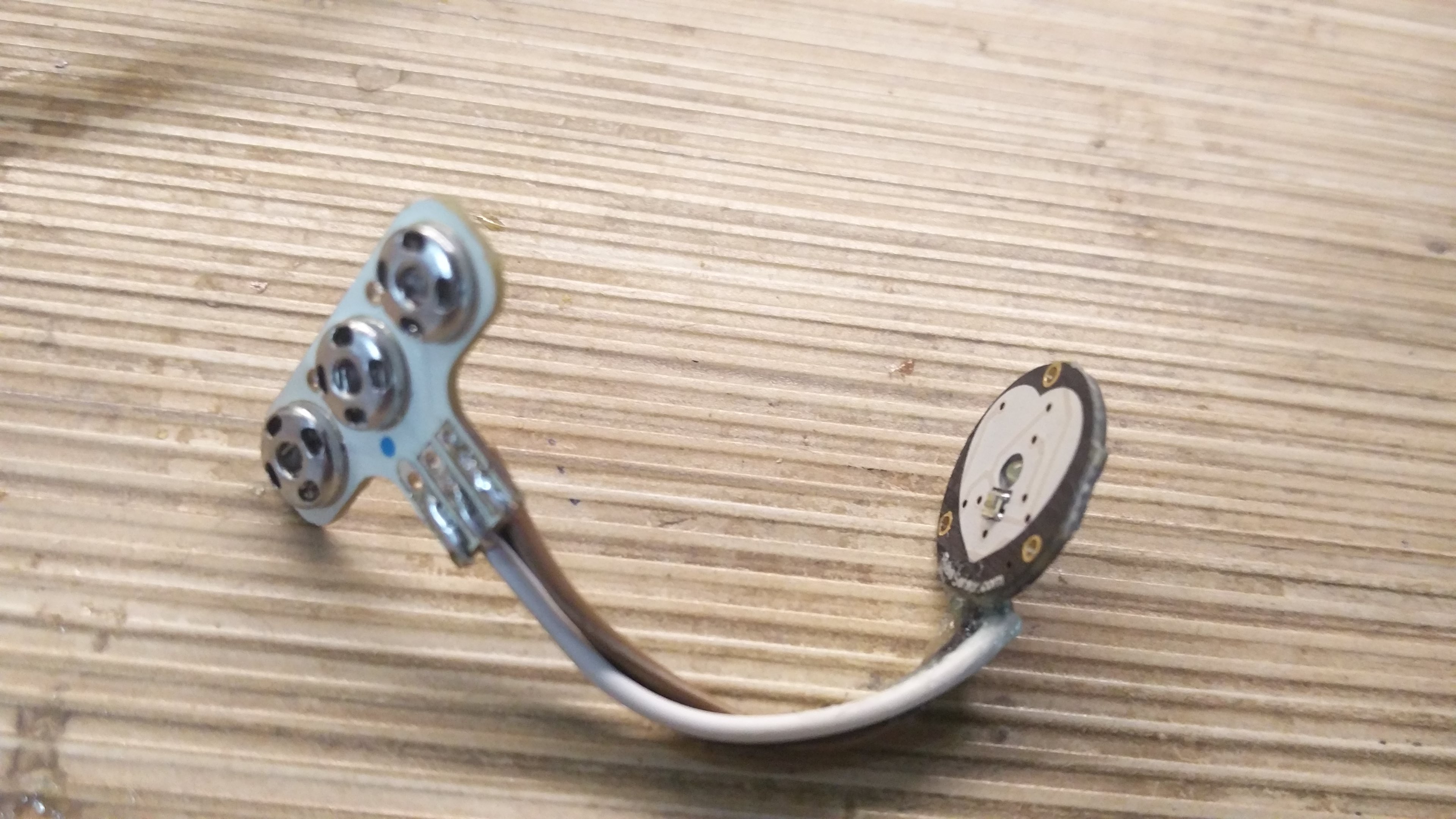

 Now for the moment of truth, Does it work?
Now for the moment of truth, Does it work?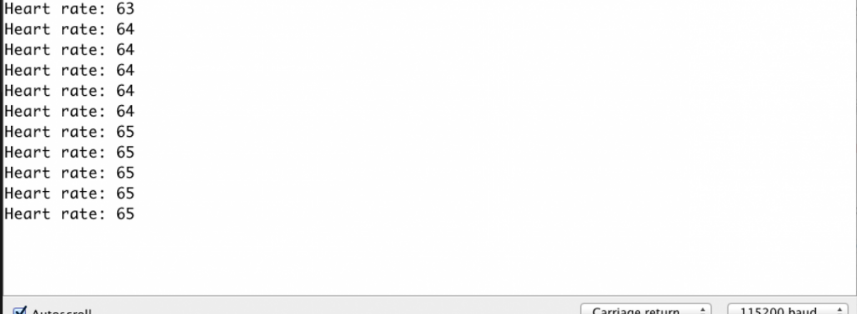

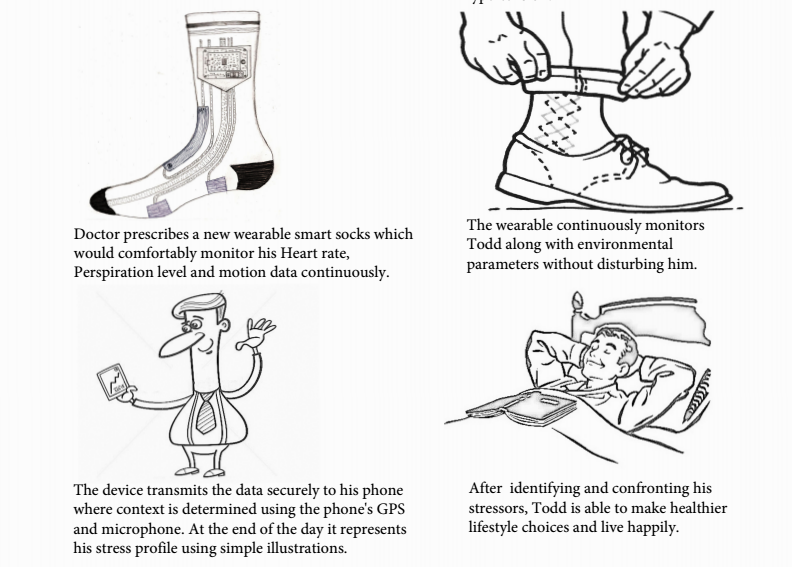
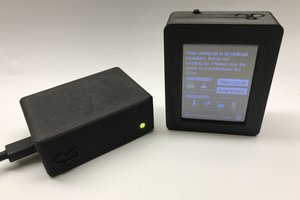
 Darian Johnson
Darian Johnson
 Vignesh Ravichandran
Vignesh Ravichandran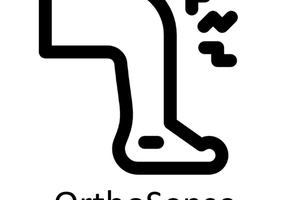

 Danie Conradie
Danie Conradie